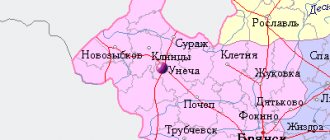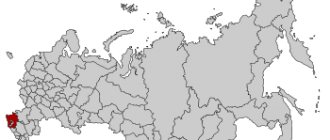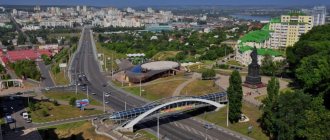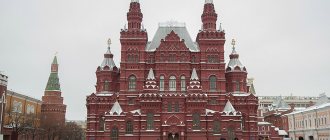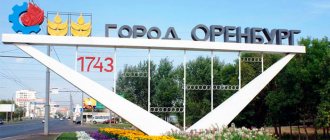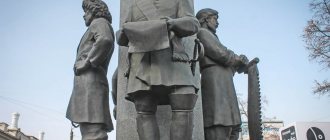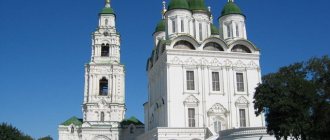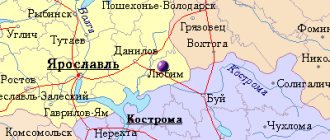Usually a house is built from a stove, a city from a large reservoir, a fortress from the relief, and only the Buryat Kyakhta was built in the steppe, where a person would never settle of his own free will. The answer is simple: here was a border checkpoint on the Great Tea Road. For a long time, it was in this miniature town that all Russian trade with the Middle Kingdom took place. They say that the local residents were so rich that they had difficulty finding hired workers - no one wanted to serve their neighbor. But most importantly, caravans of great travelers who dared to explore mysterious Asia passed through Kyakhta.
City by royal decree
Kyakhta can be called the “brother” of St. Petersburg: both were built by the will of Peter the Great. The appearance of a city on the outskirts of the empire corresponded to the interests of the state. In the 17th century, diplomats undertook several reconnaissance expeditions and official embassies to China to establish the border and trade relations between Russia and the Middle Kingdom. In 1689, the states concluded the Treaty of Nerchinsk. Official trading has begun.
On July 5, 1725, Savva Raguzinsky was appointed plenipotentiary ambassador to China in St. Petersburg.
sava_vladislavic_raguzinski.jpeg
Savva Ragudzinsky.
Engraving. Author unknown. Source: wikipedia.org His candidacy was successful: he showed extraordinary talent as a diplomat, perseverance and statesmanship. In a short time, Raguzinsky established contacts with China, deftly maneuvering between Beijing nobles and cunning merchants.
On August 20, Russia and China signed an agreement called Burinsky, after the site of the Russian ambassador’s camp on the Bura River, which established the southern border. It went from Kyakhta to the upper reaches of the Yenisei to the west and to the Gorbitsa river to the east. 63 lighthouses were installed along the border as border markers. They looked peculiar: stone mounds in which they buried a note stating that there was a border here, in Russian and Chinese. And on both sides there was a neutral strip of land, having a width, “according to the convenience of local conditions, from 5 to 30 fathoms.”
The question of border security immediately arose. Raguzinsky assigned a large role to the Buryats, who were famous as excellent shooters, riders and “pathfinders” who were able to distinguish the tracks of horses and cattle crossing the border. On the initiative of Savva Lukich, 15 guards from the Buryats of the Selenga and Khorin clans were recruited to protect the Trans-Baikal borders of Russia.
big_coppia_pannelli_1.jpg
Watercolor Paper on canvas.
China, Qing dynasty, 19th century Without wasting any time, Raguzinsky ordered the construction of the New Trinity Fortress. The fortress was founded in the steppe on the banks of the Kyakhta River. Once upon a time there was a Russian guard post at Barsukovskoe winter quarters. The fortress project was also developed by Savva Lukich. The outpost was named in honor of Trinity Day, when it was founded, and later it turned into the city of Troitskosavsk. And since 1934 it began to be called Kyakhta in the Buryat manner.
The German traveler Peter Simon Pallas wrote: “ ...Kyakhta residents did not win in their reasoning the place itself, which, in addition to being sandy and stone, is also not suitable for any vegetable gardens.”
According to the memoirs of travelers, the shallow water of the river was the main problem of the village.
Even in summer rains, “you can cross it without getting your feet wet, so you can hardly even call it a river.” Pallas wrote that on the territory of Kyakhta there was only one well “in which the water is pure, but it, like the others, is not without error.”
Rich merchants, “like strong tea drinkers,” were allowed by the Chinese to enter their territory “to take clean water from the spring on the banks of Kyakhta...” But the lack of water did not frighten the local inhabitants. The main thing is that money flowed here. So, in 1862, four thousand people lived in the settlement. Of these, 276 were merchants. Of the 165 trading houses, 60 belonged to merchants with a turnover of more than five million rubles a year.
And on the other side…
On the other bank of the Kyakhta River, 120 sazhens (less than 300 meters), at the same time as Troitskosavsk, the Chinese Maimachen was built. The question is, why? Until the beginning of the 20th century, China was an extremely closed country. Europeans were not expected there, and government caravans were allowed through from border Russia only three times a year. They were led by trusted merchants. Each was assigned a government commissar, four kissers and a guards officer with a hundred Cossacks. Now you can get from Moscow to Beijing by train in 6 days, by plane - in 8 hours, but at the beginning of the 18th century the journey took a year. Plus a year for the return journey and another one to form a new caravan. Needless to say, rare lucky people could become merchants of this caravan?
Kyakhta
The city of Kyakhta - administrative ]Kyakhta district[/anchor] - is located in the south of the Republic of Buryatia, 220 km.
from the capital Ulan-Ude. The city of Kyakhta was founded in 1728 by Count Savva Lukich Raguzinsky at the behest of Peter I. For more than a century and a half, Kyakhta was an important trading center of the Russian Empire. Taking into account that the turnover of Kyakhta trade at the end of the 18th century reached 10 million rubles, which in value was equivalent to 1/6 of the budget, we can reasonably assume that the importance of Kyakhta for both the budget and the national income of the country was great. Despite all the factors of its geographical exclusivity, the capitalization of the Kyakhta economy was more than 140 times higher than the Russian economy as a whole. In the middle of the 19th century. 95% of tea imported into Russia came through Kyakhta. The total capital of Kyakhta entrepreneurs in 1855 exceeded 160 million rubles, which made Kyakhta the largest trade and financial hub of the state. Kyakhta merchants were famous not only in Russia, but also in European countries; not a single major fair was held without the participation of Kyakhta representatives. It is difficult to overestimate the importance of the Kyakhta trade on the development of Siberia, and Russia as a whole; hundreds of thousands of people were drawn into servicing the trade “Tea Route” along its entire length.
The role of Kyakhta in diplomacy is great; many controversial issues in border issues were resolved in Kyakhta and issues of cross-border cooperation were successfully promoted.
Kyakhta made a great contribution to strengthening good neighborly relations with the neighboring state - Mongolia.
In 1973, the city, for its outstanding role in the development of Soviet-Mongolian friendship, was awarded the highest award of Mongolia - the Order of Sukhbaatar, and today it is the only city in the world awarded the highest award of a foreign state. For two centuries, Kyakhta was the place where Russian and foreign scientific expeditions began and ended, which made a great contribution to geographical discoveries in East and Central Asia.
All the years since its foundation, Kyakhta has been a military outpost of Russia and today, the military base of the Ministry of Defense of the Russian Federation and the Department of the Border Commandant's Office of the FSB of Russia for the Republic of Belarus located on the territory of the city play an important role in protecting the interests of the Russian Federation.
The rich history could not help but leave its mark on the appearance of the city. Historical and architectural monuments give the city its uniqueness to this day. Kyakhta is a member of the Association of Small Historical Cities of Russia, the Russian Union of Historical Cities and Regions and the Association of Siberian and Far Eastern Cities.
The municipal formation of the urban settlement "City of Kyakhta" of the Kyakhtinsky district of the Republic of Buryatia was formed in accordance with Federal Law No. 131-FZ of October 6, 2003 "On the general principles of organizing local self-government in the Russian Federation" and the Law of the Republic of Buryatia of December 31, 2004 No. 985-III. The municipality includes the village of Sudzha, in addition, on the territory of the city there is a Multilateral Automobile Checkpoint “Kyakhta” (MAPP) with its own separate infrastructure, which is part of the city.
The population of the city as of November 1, 2010 is 19,538 people. The working population makes up 66% of the city's total population.
There are currently 542 entities of various forms of ownership, 93 institutions and enterprises in various fields of activity, and 449 individual entrepreneurs operating in the city. 19 private enterprises are involved in industrial production. Part of the city’s population is constantly engaged in personal subsidiary farming for their own needs and partial sale of products on the market. There are 2,381 private farms in the city; 19 farms have been formed under the self-employment program.
In the consumer market, retail trade turnover of all organizations and individual entrepreneurs amounted to 990.3 million rubles.
There are 25 public catering facilities operating in the city with a total retail area of 1,627 square meters. meters, with a capacity of 1200 seats.
There are three public transport routes in the city, two taxi services provide services to the population, the network of consumer services for the population is expanding (hairdressers, beauty salons, service stations and tire service), today 120 entities provide such services.
On the territory of the municipality, construction of social and business facilities and major housing renovations are underway. With the participation of the district administration, the district sports hall “Olympus” was built. Construction of a secondary school is underway. Municipal Municipality "City of Kyakhta" was one of the first in the Republic of Buryatia to be included in the regional targeted program for capital repairs of apartment buildings as part of the implementation of Federal Law No. 181 of July 21, 2007. and has been participating in this program for three years, starting in 2008, with a total cost of 34 million rubles in 2008, 16 residential buildings were renovated, in 2009 – 14,473.562 thousand rubles – 6 houses were repaired and in the current year the total costs amounted to 5640.821 thousand rubles – 7 houses are subject to major repairs under the program.
In 2008, a draft Master Plan for the development of the city of
Kyakhta was developed and approved.
There are two heat supply organizations operating in the city - Teplokom LLC and Prometey LLC; water supply is currently provided by Teplocentral LLC. The management of apartment buildings is carried out by the management organization Zhilservis Plus LLC, the Uyut HOA and the Zvezdochka HOA, and Entuziast LLC.
Education is represented by three branches of state universities (GOU VPO "VSGTU", "IRGTU", "BEPI"), GOU SPO "Kyakhta Medical School", GOU SPO "Buryat Republican College of Construction and Industrial Technologies", 4 secondary schools, one evening secondary school school, Center for additional education.
Every year on June 12, City Day is celebrated. The holiday of the border Kyakhta region and the adjacent Mongolian - Selenga aimag - “Tree of Concord”, established in the 19th century, has become traditional. Transbaikal Cossacks and Mongolian border guards. Creative groups and athletes of the city take an active part in the international competition of Mongolian peoples “Altargana”.
Kyakhta is a city with developed sports traditions, the homeland of Honored Masters of Sports of the USSR, International Masters of Sports, Masters of Sports of the USSR and Russia. The city hosts republican and regional competitions in various sports. Sports competitions for the city administration cup in football, athletics, freestyle wrestling, bullet and skeet shooting, table tennis, and chess have become traditional. In 2009, the 1st Republican Spartakiad among pensioners was held in Kyakhta.
kyahta_5.jpg
Kyakhta.
Photo: Scientific archive of the Russian Geographical Society The bargaining looked like in the Stone Age, exclusively goods for goods. Russia traded household items, fabrics, spices, and tea for furs. Private commercial transactions were possible only in Maimachen.
The city looked like a regular quadrangle, surrounded by a palisade; from the inside, from north to south, it was divided by three parallel streets. One of the city's gates faced Kyakhta, others - towards Urga, as Ulaanbaatar was then called.
1929161_original.jpg
Street in Maimaichen with a shrine in the background.
1849-1850. Drawing from the album “China Border”. Mather K.P. The order in Maimachen was similar to a monastery: Chinese laws prohibited women from settling outside the Great Wall, so only men lived there. Merchants with their northern neighbor were literally raised here: teenagers aged 12–14 were brought to Maimachen, taken into service in shops, and taught the Russian language. After 3-4 years, they were allowed to trade and start families in the Middle Kingdom. Outside traders sometimes appeared, but they were also obliged to first learn Russian. This was done specifically to protect Chinese interests: it was believed that if Russian merchants mastered Chinese, they would be able to eavesdrop on secrets related to trade.
Main event
settlements of the district » Municipal formation "City of Kyakhta"
Dear visitors!
https://mo-kyakhta.bur.eis1.ru/
Stepanov Evgeniy Valerievich
Postal address: 671840, Republic of Buryatia, Kyakhtinsky district, Kyakhta, Lenin St., 29.
Tel. (830142) 91-3-02, fax: (830142) 41-3-05
E-mail address
Working hours: Monday-Thursday – from 8-00 to 17-00
Friday – from 8-00 to 16-00
Lunch break – from 12-00 to 13-00
- Information on the activities of state bodies and local governments
- Socio-economic development of municipal municipality "City of Kyakhta" (statistical information)
- Rule-making activities
- Administrative regulations for the provision of municipal services
- Information on the participation of government agencies in targeted and other programs, international cooperation
- Protection of the population and territories from emergency situations
- Check results
- Official speeches, management statements
- Staffing information
- About working with citizens' appeals
- Major renovation
- News from Municipal Municipality "City of Kyakhta"
- Auctions
- Land management
- Passenger Transportation
- Rules for the improvement and operation of improvement facilities on the territory of the Municipal Municipality "City of Kyakhta"
- Notices about the place and procedure for familiarization with the land surveying project for land plots allocated on account of land shares from agricultural lands
- Plan for conducting scheduled inspections of legal entities and individual entrepreneurs for 2017.
- Information on the procedure for obtaining a copy of the report on the technical inspection of the property proposed for inclusion in the object of the concession agreement
- Municipal register
- Support for SMEs
ads
- Regulations of the city competition for the best New Year's decoration among organizations and institutions of Kyakhta
- Position of the city competition for the best New Year's decoration among TOS
- Public consultations in the city of Kyakhta on the development of the Shurenskaya HPP and River Flow Regulation projects. Orkhon and the construction of a complex of reservoirs in Mongolia"
- Announcement from Rosreestr
- Notice of the possibility of providing land plots for rent
- Information for owners on the provision of utility services
- Notification to owners of premises in the apartment buildings of military camps No. 1 and No. 3
- Roadmap for the procedure for issuing technical conditions, information on connection fees, concluding agreements on connection to heat supply networks, cold water supply and sanitation in the Municipal Municipality "City of Kyakhta"
Date created: 20-10-2014 Date last modified: 02-12-2020
1926809_original_1.jpg
Kyakhta.
Gostiny Dvor. 1890s. Photo: Jules Legras Trade in Maimachen and Kyakhta intensified in December, January, February and March, when large quantities of goods arrived. After the Chinese New Year there was a “lucky day”, or a trading holiday, when all trading Chinese always tried to make some profitable trade deal, believing that this would ensure good luck for the whole year. Usually, for wholesale trade, the Chinese went to Kyakhta, where they inspected samples at the exchange yard and often concluded a trade deal here. Most often, the Chinese went straight to the houses of Russian merchants and there, over lunch or a cup of tea, they agreed on “what goods the Russian intends to take for his own,” and agreed on the quantity of goods to be bought and sold, transportation and other expenses. Having agreed, the seller and buyer went to the barn, and then to Maimachen. There the Russian chose “the goods he liked best,” set aside the ones he needed, and left someone to guard them.
1927819_original.jpg
Kyakhta and Maimachen.
1890s. Photo: Jules Legras Meanwhile, trade with China grew. In 1800, a little more than 900 tons of tea were brought from China to Russia, and in 1820 - already more than 1,600 tons. At the end of the 1830s, purchase volumes increased to 2,500 tons! Under Alexander III, 27% of Chinese tea was shipped to Russia (to the USA - 13.7%, to England - 57.7%).
In 1808-1809 60 “first-class” merchants, their commission agents and clerks, representing 16 cities of Russia, traded here. By the beginning of the 19th century, the Siberian tea route had finally taken shape. Sloboda Troitskosavsk began to resemble not a populated area, but a trading post. Only merchants and their clerks lived in it, since at the end of the 1770s, when the business passed into the hands of the richest merchants, people who did not participate in wholesale trade were evicted.
Kyakhta was the most desirable place for business-minded, capitalist and adventurous people. Within a year, some merchants rose from the 3rd to the 1st guild. Many created their own powerful tea companies.
KYAKHTA
KYAKHTA, a city in Russia, in the southern part of Buryatia, the center of the Kyakhtinsky district. Population 20.2 thousand people. (2019). Located in Transbaikalia, in the Selenginsky middle mountains, 35 km from the railway station. Naushki, near the border with Mongolia.
On the site of the modern city in the 1st quarter of the 18th century. there was a Barsukovskoe winter hut. In 1727, in its place, by order of the Russian diplomat S. L. Raguzinsky-Vladislavich, the Trinity (Novotroitskaya, later Troitskosavskaya) fortress was founded (construction completed in 1728; demolished at the beginning of the 19th century). In 1728, under the terms of the Russian-Chinese Treaty of Kyakhta of 1727, near the Trinity Fortress, on the border with China opposite the Chinese village of Maimachen, Raguzinsky-Vladislavich founded the fortified trading settlement of Kyakhta (from 1743 Kyakhtinskaya Sloboda). The Troitskosavsk fortress (since 1805 the provincial town of Troitskosavsk) and the Kyakhtinskaya settlement were part of the Irkutsk province of the Siberian province (until 1764), the Irkutsk province (1764–1851; in 1783–96 – the Irkutsk governorship), the Transbaikal region (1863–1920). Since 1772, the Kyakhtinskaya Sloboda became the only point of legal Russian-Chinese trade (8.3% of foreign trade turnover, 1775; annual trade turnover in 1757–1762 was over 1 million rubles, in 1780–1785 – over 6.3 million rubles) . The main population of the settlement were merchants and guild artisans. In 1792, customs from Irkutsk was transferred here. Trade operations of Russian merchants were carried out according to special rules; they could only be carried out by Russian citizens. All transactions in 1800–55 were non-monetary in nature (a unique case in Russian international trade), prices for Russian goods and the quality of Chinese goods were determined by an elected board of 6 merchants (“companions”, or “elders”). Chinese goods in the 18th century. - mainly cotton fabrics, in the 19th century. - tea; Russian goods in the 18th century. – fur, in the 19th century. – textiles (cloth, corduroy, chintz).
In 1809, all residents of the Kyakhtinskaya Sloboda were resettled to Troitskosavsk, with the exception of merchants involved in wholesale trade, and it was forbidden to settle in the settlement. Since 1822, the border department was located in Troitskosavsk. In 1851, the Kyakhta city government was created with its center in the city of Troitskosavsk, which also included the Kyakhtinskaya and Ust-Kyakhta settlements with adjacent lands (as a result, Troitskosavsk and Kyakhta were finally united administratively). The Kyakhta mayor was directly subordinate to the Governor-General of Eastern Siberia. In 1861, the Kyakhta customs office was transferred back to Irkutsk, and a permanent treasury was created in Troitskosavsk. The monopoly of the Kyakhta merchants on the tea trade was undermined by the decision taken in 1862 by the Russian government to allow the import of tea into Russia across the western border (with the opening of shipping along the Suez Canal in 1869, trade through the Kyakhtinskaya Sloboda decreased even more). In 1863, the Kyakhta city administration was liquidated, and its territory became part of the Trans-Baikal region with special management rights. In 1872, the Troitskosavsky district (since 1901 district) of the Transbaikal region was formed. From the 2nd half of the 1880s. A steady decline in trade turnover began in the Kyakhtinskaya Sloboda. At the turn of the 19th–20th centuries. In connection with the construction of the Trans-Siberian Railway and the Chinese-Eastern Railway, which passed away from Troitskosavsk and Kyakhtinskaya Sloboda, the latter retained its significance as a center only for Siberian wholesale trade; Russian-Mongolian trade was also carried out here. In 1915, a Russian-Chinese-Mongolian agreement was signed in Troitskosavsk, which regulated political and territorial issues related to the recognition of the autonomy of Outer Mongolia.
During the Civil War of 1917–22, in February 1918, Soviet power was established in Troitskosavsk. In August 1918, the city was occupied by the forces of the white armies, and on March 4, 1920, by the red partisans. In 1920–22 Troitskosavsk was the district center of the Baikal region of the Far Eastern Republic, in 1923 - the Baikal province of the RSFSR. In 1920–1921, Mongolian revolutionaries Sukhbaatar and Kh. Choibalsan carried out their activities here; the 1st Congress of the Mongolian People's Party was held on March 1–3, 1921. 7.6.1921 Troitskosavsk was occupied by units of the 1st Cavalry Brigade of Baron R. F. Ungern von Sternberg, on June 11 it was liberated by the forces of the Mongolian People's Revolutionary Army and units of the Workers' and Peasants' Red Army.
In 1923–73, the center of the Troitskosavsky (from 1927 Kyakhtinsky) aimak of the Buryat-Mongolian (from 1958 Buryat) Autonomous Soviet Socialist Republic. In 1934 Troitskosavsk was renamed Kyakhta. Regional center of the Buryat Autonomous Soviet Socialist Republic (1973–1990), Buryat SSR (1990–92), Republic of Buryatia (since 1992). Historical city of Russia (since 1990).
The following have been preserved: the Trinity (1812–17) and Resurrection (1830–38) cathedrals, the Assumption Church (1884–88), Gostiny Dvor (1842) and shopping arcades (1847–53), the buildings of the women's gymnasium (1862), the Alekseevsky real school ( 1876), libraries (1887); house of Kurbatov (1820s), house of merchant A. M. Lushnikov (mid-19th century). Museum of Local Lore named after Academician V. A. Obruchev (1890). Planetarium.
Food industry enterprises.
30 km from Kyakhta is the Kiran mud resort, 40 km away is the oldest Murochinsky (Tsongolsky) datsan in Transbaikalia (founded in 1741, the first wooden buildings - 1758).
tee-3057645_960_720.jpg
Photo: pixabay.com
“... before we had time to take off our frock coats, they themselves came into the room in which I was staying with Matusovsky, four of them. Approaching us and greeting us in Russian, they took turns shaking hands as casually and simply, as if we were their old friends and as if they were visiting us for the hundredth time. Immediately we smelled a strong odor of garlic and opium smoke; nevertheless, I was very happy about their visit, because I wanted to see these representatives of an interesting people as soon as possible, and I began to examine them themselves, their clothes and shoes, even with more unceremoniousness than they treated us, because for them Russian people were no longer a curiosity.”
Pavel Pyasetsky, “Travel to China 1874-1875.”
20-30 families lived in Kyakhta and had everything or almost everything that, by the standards of the 19th century, constituted the well-being of the rich. “The wives and daughters of the merchants, according to the witness, shone with rich outfits, natives of the Kuznetsky Most,” and “each estate consisted of several houses with barns, stables and resembled the estates of Russian landowners,” -
This is how the famous scientist and traveler Vladimir Obruchev recalled Kyakhta. Houses were built either wooden or half-stone, with a stone bottom and a wooden bottom. Merchants preferred wooden residential buildings, dry, warm and “breathable”. They were all “spacious and well built.” The merchants had their own club, gardens, musicians, choir and lived “in grand style.” Someone called Troitskosavsk “sandy Venice”, someone “Klondike”, and someone “Moscow-in-the-East”. Decembrist Nikolai Bestuzhev visited here several times and dubbed the settlement “Zabalui-gorodok”.
1928062_original.jpg
Postcard of Kyakhta, late 19th century
In 1857, Karl Marx analyzed the phenomenon of Russian trade with China in an article that he published on the front page of the New York Daily Tribune. The German economist introduced American readers to our realities: “This trade, which takes place at a kind of annual fair, is managed by twelve intermediaries, of whom six are Russian and six Chinese; they meet in Kyakhta and, since trade is exclusively barter, they establish norms by which goods supplied by each side must be exchanged. On the Chinese side, the main item of trade is tea, on the Russian side - cotton and woolen fabrics. In recent years this trade has apparently increased significantly. Ten or twelve years ago the amount of tea sold to the Russians in Kyakhta did not exceed an average of forty thousand boxes; however, in 1852 it already amounted to one hundred and seventy-five thousand boxes...”
Kyakhta // “Historical Encyclopedia of Siberia” (2009)
KYAKHTA , a city of regional subordination in the Republic of Buryatia, the administrative center of the district of the same name, is located on the border with Mongolia, 235 km south of Ulan-Ude, in the Selenginsky Middle Mountains, 35 km east of the Naushki railway station on the Ulan-Ude-Ulan line -Bator.
Road communication with Ulan-Ude. From 1727 - an outpost, from 1743 - a trading settlement near Troitskosavsk. The modern city was formed in 1934 as a result of the unification of Kyakhta and Troitskosavsk. Population (thousand people): 1852 - 7.8; 1897 - 8.8; 1913 - 10.7; 1958 - 8.2; 1992 - 7.2; 2002 - 18.4; 2007 - 18.9.
After the Russian diplomat Count Savva Raguzinsky concluded the Treaty of Burin with China (1727), Troitskosavsk arose outside the walls of the Novotroitsk fortress under construction (from the combination of the name of the Trinity fortress, since it was founded on the day of the Holy Trinity, and the name of the founder). Located along the Kyakhta River. After the signing of the Kyakhta Treaty (1727) on the terms of trade between Russia and China, a trading outpost was established on the banks of the Kyakhta River, south of the Trinity Fortress, on the shortest route to Beijing. The outpost was named after the Kyakhta River. Since its inception, Kyakhta has been an integral part of Troitskosavsk, although for a long time it was considered a separate settlement. In 1743, by decree of the Senate, Kyakhta was elevated to the status of a trading settlement. In 1851, Kyakhta was the only settlement in Russia with the right of self-government (city government was introduced). In 1773, the Russian naturalist P.S. visited Kyakhta. Pallas, in 1830 - inventor and orientalist P.L. Schilling (he completed work on the invention of the world's first electromagnetic telegraph apparatus). The journeys of famous Asian explorers - N.M. - began and ended in Kyakhta. Przhevalsky, A.V. and G.N. Potaninykh, D.A. Clemenza, P.C. Kozlova, N.M. Yadrintseva, G.Ts. Tsybikova, V.A. Obruchev and others. They stayed with the Kyakhta merchant A.M. Lushnikov, who financed some of their travels. Decembrists M.A. visited Kyakhta. and N.A. Bestuzhevs, K.P. Thorson, I.I. Gorbachevsky, I.I. Pushchin, S.P. Trubetskoy, S.G. Volkonsky with his families. Agrochemist D.N. was born in Kyakhta. Pryanishnikov. In 1915, the Russian-Chinese-Mongolian agreement (Kyakhta) on the autonomy of Outer Mongolia was signed in Kyakhta. In 1920-21, Kyakhta was the center of activity of D. Sukhbaatar (1893-1923), a Mongolian politician and statesman. In 1921, the 1st Congress of the Mongolian People's Revolutionary Party was held in Kyakhta. From the end of the 18th century. The famous “tea route” passed through Kyakhta; in 1792, customs was transferred here from Irkutsk. By the middle of the 19th century. In Kyakhta-Troitskosavsk, 58 Russian trading firms and companies conducted business; trade turnover amounted to up to 30 million rubles. in year. In 1898, there were 244 shops and other retail outlets in the city, and a branch of the Russian-Asian Bank operated. After the opening of the route to China through the Suez Canal (1869) and the construction of the Chinese Eastern Railway (1903), Kyakhta lost its significance as the main point of trade with China and became the center of Russian trade with Mongolia. From the second half of the 19th century. Industry is developing in Kyakhta: small leather, soap, candle (stearine), brick, flour milling, sugar and salt factories. Electric lighting appeared in 1914. Today in Kyakhta there is a spinning and knitting factory (1955), a bakery, a brewery and others. Fairs were revived in 1993-94. In 2001, a vehicle checkpoint was opened on the Russian-Mongolian border.
- Buryat national democrats and socio-political thought...
kyahta_6.jpg
Kyakhta.
Photo: Scientific archive of the Russian Geographical Society There was a lot to study. Kyakhta is the only city in the Russian Empire that was self-governing. One resident of Kyakhta accounted for 150 times more taxes than the average for the empire, but almost a quarter of the city budget was spent on education. In a tiny town, even by the standards of the 19th century, there were nine educational institutions! Among them: a real school, a women's gymnasium, a women's parish school, a four-year city school.
Gateway to Asia
It so happened that all major domestic expeditions to study Central Asia went through Kyakhta: Nikolai Przhevalsky, Pyotr Kozlov, Vladimir Obruchev, the Potanins, Gombozhab Tsybikov and others.
Nikolai Mikhailovich Przhevalsky, returning from his long journey to Central Asia: “ ... we finally saw the white spitz of the Kyakhta churches - the first symbol of our Motherland.”
Kyakhta, despite all its originality, was for Russian scientists and travelers a point on the border of the known and unknown worlds.
Tea Kyakhta. How the Suez Canal left the city of Russian millionaires stranded
Kyakhta is a small Russian city on the border with Mongolia, which is unfairly little remembered these days. Now just over 20 thousand people live there, and in the 18th-19th centuries Kyakhta was a center connecting two civilizations. Here, between Russia and China, lay the Great Road - but not the silk road, but the tea road.
The Great Tea Route
In Russia they loved black, long tea - thick and strong. Tea was considered one of the symbols of the country, especially in the capital. Russians could drink up to 30 cups of tea at a time! Literally, “to the point of stupefaction.” In Moscow, the samovar was served literally everywhere: not a single mass celebration, and what’s more, even ordinary home gatherings were not complete without tea drinking.
The drink was also sung in national folklore: “No one in Rus' choked on tea,” “Tea never hurts.” But weak tea was not respected: “You can see Moscow through this”, “You can see all your relatives in liquid tea.” This product even set the price for other goods at fairs - “Tea puts a price on everything.” In general, real black gold of its time.
It’s no wonder that the most popular commodity in the Russian Empire was tea. The Chinese themselves preferred green, and black was exported: long leaf, from young leaves - to Russia, tiled - to Mongolia, where milk, lard, salt and spices were added to it. All tea delivered from the Middle Kingdom was called “Kyakhta.” And for Europeans it was “Russian tea” - after all, the Chinese product was transported to Europe through Russia.
Federal News Agency / Frank and Frances Carpenter Collection /
City of Millionaires
Only tea imports could enrich Kyakhta, but it was not without reason that it was said: “A man cannot be satisfied with tea alone.” In better times, up to 67% of Russia's trade turnover with Asian countries passed through the city. In addition to tea, silks, cotton, and porcelain were imported. Furs (the Chinese had practically no fur of their own), tanned leather, cotton and woolen fabrics went to China from the Russian Empire. In 1857, the German economist Karl Marx devoted an entire article to Russian-Chinese trade, in which Kyakhta was the main “hero”.
“This trade, which takes place at a kind of annual fair, is led by twelve middlemen, of whom six are Russian and six Chinese; they meet in Kyakhta and, since trade is exclusively barter, they establish norms by which goods supplied by each side must be exchanged. Ten or twelve years ago the amount of tea sold to the Russians in Kyakhta did not exceed an average of forty thousand boxes; however, in 1852 it already amounted to one hundred and seventy-five thousand boxes ...,” Marx wrote in an article published on the front page of the American magazine New York Daily Tribune.
The standard of living of the guardians of the “gateway to Asia” was consistent with the importance of the city for the entire country. In his own way, Kyakhta was accurately described at the end of the 19th century by the editor of the Eastern Review, the People's Will revolutionary Ivan Popov : he was sent into exile there in 1885, already at the end of the Kyakhta trade route.
“...There were only houses of millionaires or those who served them. There were no beggars, and there couldn’t have been any, because they would have brought enormous dissonance into the lives of the rich.”
Popov, by the way, married the daughter of Kyakhta millionaire Alexei Lushnikov . And this is not an accident: the poor bride could not be found in Kyakhta. There are more millionaires than in any other city of the Russian Empire. There were so many rich people per capita neither in St. Petersburg nor in Moscow. Decembrist Nikolai Bestuzhev (a representative of an ancient noble family) called Kyakhta “Zabalui-gorodok”.
“The sounds of ballroom music were heard almost every evening, and the sounds of popping champagne corks were heard almost from dawn to the next...”
In Kyakhta they also dabbled in smuggling, not limiting themselves to legal trade. There was enough money not only for entertainment, but also for a luxurious life. The most modest Kyakhta merchant kept 10 servants and 15 horses. For comparison, the richest man in Siberia in the mid-19th century, Yakov Nemchinov, kept about 75 servants and 100 horses.
Distant Kyakhta lived by self-government, and collected taxes 150 times more than the national average. From each box of tea, merchants donated 40-60 kopecks to support the city, the annual amount of fees reached 110 thousand rubles. This allowed the settlement to develop, and a quarter of the city budget was spent on education.
mo-kyakhta.bur.eis1.ru / MKU Administration of Municipal Municipality "City of Kyakhta"
Tomsk merchants spoke respectfully about the Kyakhta people: “there is no need to talk about Kyakhta, there are English merchants there...”. The residents of Kyakhta dressed in European fashion, and their correct speech and sociability did not differ from the average Russian intellectual. Popov described the exceptional interweaving of many cultures and even religions.
“...A magnificent cathedral, comfortably furnished apartments, paintings, tapestries, beautiful libraries, a dress from Worth from Paris, singing flowing from the windows, a piano, violins - Mozart, Beethoven, Tchaikovsky. European culture, the life of a nomadic nomad, the thousand-year-old frozen civilization of the Middle Kingdom, shamanism, Taoism, Lamaism, Mohammedanism, Christianity, Judaism. All the religions of the world have merged here, coexist as peacefully as Orthodox Christians and Buddhist chapels, Taoists, and a pyramid of shamanists live peacefully on the hill of the Tunkin Alps.”
The end of Kyakhta wealth
After the dawn, even an economic one, there still comes a sunset. Exactly 151 years ago, on November 17, 1869, the Suez Canal was opened in Egypt, bordering two continents - Africa and Eurasia. It allowed ships to pass in both directions between Europe and Asia without rounding Africa. And trade in Kyakhta began to fade.
wikipedia.org/Public Domain
Europeans began to transport most goods, including Chinese, through the Suez Canal, and Chinese tea was delivered through Odessa, not Kyakhta. It was cheaper that way. At first, the Kyakhta people still kept their trading business afloat, but the control blow was the start of traffic on the Chinese Eastern Railway in 1903. The middle class of Kyakhta became poor, they had to go to work on the railway, and the rich sold their property at auctions.
Despite the economic decline of Kyakhta, Russians continued to be a “tea” nation. Under Alexander III, by the end of the 19th century, 27% of all Chinese tea was sent to Russia, and about 14% to the USA. The record of the Russian Empire was broken by England - 57.7% of tea was exported there.
The difficult 20th century and the colossal changes that it brought to the whole world, and especially to Russia, were also turbulent for distant Kyakhta: the First World War, two revolutions, and a civil war came there. The city became fateful for neighboring Mongolia. In the 1920s, Kyakhta was a key site of the revolutionary activities of the Mongolian leader Sukhbaatar , for which it was subsequently awarded the order of the same name. Thus, Kyakhta became the only city in the world awarded the highest award of another state.
wikipedia.org / National Library of Russia / Public Domain
New history of Kyakhta
How else did the residents of Kyakhta distinguish themselves in Russian history? Not only entrepreneurial talent, but also courage. In 1941, the Kyakhta people rushed to the front to defend their homeland. On June 22, Nazi Germany attacked the USSR, and three days later an article was published in the city newspaper:
“In two days after the report of the attack on our country by brazen German fascists, the district military registration and enlistment office received more than 80 applications from patriots of the Motherland, men, women, girls and boys from our region.”
The Kyakhta people were front-line soldiers, Stakhanovites, Timurites, pioneers, and Octoberists. In general, exemplary Soviet people.
With the collapse of the USSR, economic success predictably declined: under the Soviets, the Kyakhta knitting factory operated there, cross-border trade was concentrated, and logistics enterprises were located there. In the 2010s, the latter found hope for a new life.
In 2016, it was decided to create a large customs logistics terminal, attracting Chinese investors. At the same time, Russia, Mongolia and China signed an agreement on international road transport along the Asian highway network, so the project has a serious economic foundation.
wikipedia.org / Arkady Zarubin / CC BY-SA 3.0
Inscriptions and advertising signs in Kyakhta are duplicated in Mongolian. Mongols are private guests here - they come to buy groceries and refuel with gasoline, which is much cheaper in Russia than in the neighboring country. Here and there you can see new carved wooden frames and shutters on the windows - these details are almost lost in Russia, but still remain in Kyakhta.
The Buryat city has preserved the remnants of its former greatness in the form of architectural monuments. Most of them require reconstruction: the large Gostiny Dvor of the mid-19th century, the customs house of the same time, the house of the merchant Lushnikov, where the famous traveler Nikolai Przhevalsky ”. The status of architectural monuments does not save buildings from a completely “unmemorable” attitude.
f18_o7_566a_2.jpg
Photo: Scientific archive of the Russian Geographical Society
“The Kyakhta people tried to acquaint us with all aspects of Chinese life, and since they themselves are great hunters of dining with the Chinese, they arranged dinner for us with a merchant who came to invite us. Since I will still have the opportunity to talk about a Chinese dinner, I will not describe it now, but will only say that I not only did not find Chinese dishes as disgusting as they are accustomed to believe from the incorrect stories of some travelers, but many, on the contrary, They seemed very tasty to me, and in general I completely calmed down about my food in China. For a lover of strong drinks and wines, it’s really bad here: there is terrible poverty in choice, and everything is of poor quality. Also not bad is warmed up alcohol with the scent of roses, served at dinner in tiny cups.”
Pavel Pyasetsky, “Travel to China 1874-1875.”
Transbaikal Cossacks not only guarded the border with China and Mongolia, guarded government facilities and escorted convict parties, but also accompanied scientific and diplomatic missions. Thus, the Cossacks guarded the expeditions of Nikolai Mikhailovich Przhevalsky to China, Mongolia and Tibet.
“The newly arrived Cossacks turned out to be the most zealous and devoted people throughout our long journey. We soon became close friends with these good people, and this was an important guarantee for the success of the business. At a terrible distance from our homeland, among people who were alien to us in everything, we lived as siblings, sharing labors and dangers, sorrows and joys together. And to the grave I will retain grateful memories of my companions, whose boundless courage and dedication to the task determined the entire success of the expedition,” Przhevalsky noted in his diary.
przhevalskiysite.jpg
Nikolai Przhevalsky, wikipedia.org
“Finally, after all the day’s work, the exhausted, chilled and tired Cossacks usually took turns, also in bad weather, for two night guard shifts. In a word, the service of the Cossacks was extremely difficult, but they behaved well and strictly fulfilled their duty,”
- Przhevalsky also wrote in his book about a trip to the foothills of Tibet. And the Cossack constable, Buryat Dondok Irinchinov, became the researcher’s faithful companion, accompanying him on four expeditions. For which he was awarded a bronze medal of the Russian Geographical Society. Transbaikal Cossack Panteley Teleshev in the 4th expedition N.M. Przhevalsky participated as a specialist preparator. For the discovery of a new species of lark he was awarded a small silver medal.
Researcher and scientist Nikolai Przhevalsky wrote: “These adversities affected the Cossacks even more strongly. At the bivouac, two of them tended the caravan animals, often in pouring rain or a strong snowstorm. The attendant and the cook made tea and lunch in the same rain or snow.”
But this tea was very unusual. The harsh climate and local traditions accustomed the Cossacks to a hearty energy drink - slivan. Butter, raw eggs, flour, lard and even hemp seed were added to it. It was customary to throw a hot pebble “stallion” into a mug of tea to increase the “degree”. After drinking tea like this, the person warmed up and remained full all day. To prepare this dish, we used “brick” tea in pressed bars, which was brought from China. This tea was so valuable that it was used as an alternative currency.
Kyakhta (Republic of Buryatia)
Kyakhta:| Bichura | 85 () | IN | |
| 2 | Petropavlovka | 85 () | Z |
| 3 | Gusinoozersk | 103 (125) | WITH |
| 4 | Mukhorshibir | 123 (363) | NE |
| 5 | Tarbagatai | 140 (297) | NE |
| 6 | Babushkin | 157 (423) | WITH |
| 7 | Red Chikoy (Trans-Baikal Territory) | 163 () | IN |
| 8 | Ivolginsk | 166 () | WITH |
| 9 | Vydrino | 177 () | NW |
| 10 | Kamensk | 181 () | WITH |
| 11 | Ulan-Ude | 183 (245) | NE |
| 12 | Selenginsk | 187 (334) | WITH |
| 13 | Kabansk | 190 () | WITH |
| 14 | Petrovsk-Zabaikalsky | 196 (449) | NE |
a brief description of
Kyakhta is located in Transbaikalia near the border with Mongolia, in the Selenga midlands, 35 km east of the railway. Naushki station, 235 km south of Ulan-Ude.
30 km from Kyakhta is the mud resort area of Kiran.
Territory (sq. km): 374
Historical sketch
S.L. Vladislavich-Raguzinsky concluded the Burin Treaty with China in 1727, which determined the southern border of Russia with China, and construction of the fortress began. The Trinity Church is located in the fortress (the name is in honor of the Holy Trinity, on the day of whose celebration the fortress was founded).
Behind its walls, to the west of the Seleniginskaya road, the settlement of Troitskosavsk arose; after the fortress and the name of its founder, Russian diplomat Savva Lukich Raguzinsky-Vladislavovich (about 1670 - 1738).
After the signing of the Kyakhta Treaty (1727) on the terms of trade between Russia and China in 1728, a trading outpost was founded on the banks of the river. Kyakhta, south of the Trinity Fortress, where the shortest route to Beijing took place.
Since 1743, the Kyakhtinsky outpost became the Kyakhtinsky trading settlement. Furs, cloth, leather, sheet iron, etc. were exported to China, and silk, velvet, candy sugar, objects of applied art, etc. were exported from China. From the end of the 18th century. The famous “tea route” passed here. In 1792, customs was transferred here from Irkutsk. Trade turnover of Kyakhta-Troitskosavsk in the mid-18th century. amounted to 30 million rubles. in year.
Since 1783, the settlement of Kyakhta has been in the Irkutsk region of the Irkutsk governorship (since 1796 - Irkutsk province).
In 1851, Kyakhta was the only settlement in Russia that received the right to be self-governing. In 1861, the united Kyakhta-Troitskosavsk was officially included in the List of Russian cities.
At the beginning of the 19th century. The Troitskosavsk fortress was demolished, and in 1805 Troitskosavsk received the status of a city. In 1823-51. Troitskosavsk was a provincial town, since 1851 it was a district town, and since 1901 it was a district town.
In 1856, in the district-free city of Troitskosavsk with the Kyakhtinskaya trading and Ust-Kyakhtinskaya settlements of the Kyakhtinsk city government of the Trans-Baikal region, there were 7 churches, 955 houses, 153 shops.
In the 19th century Kyakhta-Troitskosavsk is one of the major cultural centers of Siberia. In 1835, a school of Chinese translators was opened, in 1876 - the Alekseevsky real school, in 1887 a public library was opened. In 1890, on the initiative of the exiled Narodnaya Volya members I.I. Popov and N.A. Charushin created a local history museum. In 1894, the Troitskosavsk-Kyakhta branch of the Amur Russian Geographical Society was opened.
After the opening of the route to China through the Suez Canal (1869) and the construction of the Chinese Eastern Railway (1903), Kyakhta-Troitskosavsk lost its importance as the main point of trade with China and became the center of trade with Mongolia.
In 1897, 1.0 thousand people lived in Kyakhta, 8.7 thousand people lived in Troitskosavsk.
The name is based on the tract and the Kyakhta River, from the Buryat hayagt “wheatgrass place”.
In 1915, the Russian-Chinese-Mongolian agreement (Kyakhta) on the autonomy of Outer Mongolia was signed. In 1920-21 Kyakhta is the center of activity of D. Sukhbaatar (1893-1923, Mongolian statesman and politician). In 1921, the 1st Congress of the Mongolian People's Revolutionary Party took place in Kyakhta.
In 1931, 10.6 thousand people lived in the city of Troitskosavsk.
In 1934, as a result of the merger of the city of Troitskosavsk and the trading settlement of Kyakhta, the city of Kyakhta was formed.
Some numbers
| Index | 2001 |
| Demography | |
| Number of births, per 1000 population | 13.9 |
| Number of deaths, per 1000 population | 12.1 |
| Natural increase (decrease), per 1000 population | 3.2 |
| Standard of living of the population and social sphere | |
| Average monthly nominal accrued wages, rub. | 1040 |
| Average housing area per inhabitant (at the end of the year), sq.m. | 16 |
| Number of preschool institutions, pcs. | 5 |
| Number of children in preschool institutions, thousand people | 0.5 |
| Number of daytime educational institutions (at the beginning of the school year), pcs. | 4 |
| Number of students in daytime educational institutions, thousand people | 2.9 |
| Number of doctors, people. | 68 |
| Number of nursing staff, people. | 404 |
| Number of hospital institutions, pcs. | 2 |
| Number of hospital beds, thousand units | 0.4 |
| Number of medical outpatient clinics, pcs. | 2 |
| Capacity of medical outpatient clinics, visits per shift, thousand units. | 0.5 |
| Economy, industry | |
| Number of enterprises and organizations (at the end of the year), pcs. | 572 |
| Construction | |
| Commissioning of residential buildings, thousand sq.m. of total area | 1.7 |
| Commissioning of residential buildings, apartments | 13 |
| Transport | |
| Number of bus routes (in intracity traffic), pcs. | 2 |
| Number of passengers transported by buses per year (in intracity traffic), million people. | 0.9 |
| Connection | |
| Number of residential telephone sets of the city public telephone network, thousand units. | 2.2 |
| Trade and services to the population | |
| Retail trade turnover (in actual prices), million rubles. | 9.9 |
| Retail trade turnover (in actual prices), per capita, rub. | 539 |
| Volume of paid services to the population (in actual prices), million rubles. | 15.7 |
| Volume of paid services to the population (in actual prices), per capita, rub. | 858 |
| Volume of household services to the population (in actual prices), million rubles. | 0.08 |
| Volume of household services to the population (in actual prices), per capita, rub. | 5 |
| Investments | |
| Investments in fixed assets (in actual prices), million rubles. | 0.8 |
Data sources:
Regions of Russia. Main characteristics of the constituent entities of the Russian Federation: statistical collection. Goskomstat of Russia. – M:, 2003.
Economy
Spinning and knitting factory, dairy and brewery. Bakery and other enterprises.
In the Kyakhta region, wheat, oats, barley, buckwheat, potatoes, corn, peas, and vegetables are grown. They raise cattle, horses, sheep, and pigs.
In the village of Khoronkhoi there is a processing plant that uses imported raw materials (fluorspar from Mongolia).
Culture, science, education
Museum of Local Lore named after V.A. Obruchev. Planetarium.
The journeys of famous Asian explorers - N.M. - began and ended in Kyakhta. Przhevalsky, G.N. and A.V. Potaninykh, V.A. Obrucheva and others.
Monument to the traveler A.V. Potanina.
Museums, galleries, exhibition halls
Kyakhtinsky Museum of Local Lore named after. Academician V.A. Obrucheva 671840, Republic of Buryatia, Kyakhtinsky district, Kyakhta, st. Lenina, 49 Telephone(s): (30142) 91-235, 92-333 Memorial House-Museum “Safe Apartment” Sukhbaatar 671840, Republic of Buryatia, Kyakhtinsky district, Kyakhta, st. Gornozerentuiskaya, 2 Telephone(s): (30142) 91-235, 92-333 Memorial House-Museum of the First Congress of the Mongolian People's Revolutionary Party 671840, Republic of Buryatia, Kyakhtinsky district, Kyakhta, st. Krupskoy, 37 Phone(s): (30142) 91-235
Architecture, sights
Modern Kyakhta has retained the appearance and characteristic buildings of a Siberian merchant city.
Construction in the 18th and 19th centuries. was carried out mainly along three highways, converging in the center, where the city garden and the Trinity Cathedral are located (1812-17; classicism). Stone buildings were built on the main street, while the remaining streets were lined with wooden houses. Resurrection Church (1838; classicism), Assumption Church (1857), Gostiny Dvor (1842), Living Rooms and Trading Rows.
1930038_original.jpg
View of Maimaichen and Kyakhta. 1849-1850 Drawing by Karl Mather
“Finally we were leaving for the Russian border. Heterogeneous thoughts and feelings fill a person’s soul when he goes to a foreign country for a long time. <…> All the carts with transport, three Chinese carts, left, and we followed them, placing ourselves in different carriages of our compatriots who saw us off.
Soon Kyakhta and Mai-mai-chen were left behind, and in front of us stretched the spacious Mongolian steppe, all green, only with reddish sandy paths running along it in different directions; on the horizon, in the southeastern part, blue jagged mountains rose, and above them hung heavy clouds, almost as blue as the mountains shaded by them.”
Pavel Pyasetsky, “Travel to China 1874-1875.”
To this day, the grandson and great-grandchildren of Alexander Bokhin, a member of the Tibet expedition of Pyotr Kozlov, live in Kyakhta. The famous traveler is the godfather of his daughter Catherine. In 1909, through Kyakhta, he returned from the fifth expedition to Central Asia. The area is also home to the descendants of Tsokto Badmazhapov, who gave Pyotr Kuzmich information about the city of Khara-Khoto, lost in the sands. Also living in the area are the descendants of Dondok Irinchinov, the translator of Nikolai Przhevalsky, who participated in all four of his expeditions.
Decline of Kyakhta
In 1869 the Suez Canal was opened. He opened a shorter and more convenient route for the delivery of goods from China, including tea. The cash flow that Kyakhta passed through began to decrease - expensive varieties of long tea were transported by sea, while cheap varieties, widely used in Russia, continued to be transported through Kyakhta. At the end of the 1890s, construction of the Trans-Siberian Railway was completed. All goods now went by rail, and Kyakhta remained far from the new artery of life. Gostiny Dvor in the city of “millionaires” was empty after the Russo-Japanese War. Nowadays, just over 20 thousand people live in Kyakhta, and only the picturesque ruins of the 18th–19th centuries remind of its former greatness.
Map
| Kyakhta: maps |
Kyakhta: photo from space (Google Maps) Kyakhta: photo from space (Microsoft Virtual Earth)
| Kyakhta. Nearest cities. Distances in km. on the map (in brackets along roads) + direction. Using the hyperlink in the distance , you can get the route (information courtesy of the AutoTransInfo website) | |||
| 1 | Jida | 42 () | NW |
| 2 | Bichura | 85 () | IN |
| 3 | Petropavlovka | 85 () | Z |
| 4 | Gusinoozersk | 103 (125) | WITH |
| 5 | Mukhorshibir | 123 (363) | NE |
| 6 | Tarbagatai | 140 (297) | NE |
| 7 | Babushkin | 157 (423) | WITH |
| 8 | Red Chikoy (Trans-Baikal Territory) | 163 () | IN |
| 9 | Ivolginsk | 166 () | WITH |
| 10 | Kamensk | 181 () | WITH |
| 11 | Ulan-Ude | 182 (245) | NE |
| 12 | Sotnikovo | 184 () | NE |
| 13 | Selenginsk | 187 (334) | WITH |
| 14 | Kabansk | 190 () | WITH |
a brief description of
Kyakhta is located in Transbaikalia near the border with Mongolia, in the Selenga midlands, 35 km east of the railway. Naushki station, 235 km south of Ulan-Ude.
30 km from Kyakhta is the mud resort area of Kiran.
Territory (sq. km): 374
Information about the city of Kyakhta on the Russian Wikipedia site
Historical sketch
S.L. Vladislavich-Raguzinsky concluded the Burin Treaty with China in 1727, which determined the southern border of Russia with China, and construction of the fortress began. The Trinity Church is located in the fortress (the name is in honor of the Holy Trinity, on the day of whose celebration the fortress was founded).
Behind its walls, to the west of the Seleniginskaya road, the settlement of Troitskosavsk arose; after the fortress and the name of its founder, Russian diplomat Savva Lukich Raguzinsky-Vladislavovich (about 1670 - 1738).
After the signing of the Kyakhta Treaty (1727) on the terms of trade between Russia and China in 1728, a trading outpost was founded on the banks of the river. Kyakhta, south of the Trinity Fortress, where the shortest route to Beijing took place.
Since 1743, the Kyakhtinsky outpost became the Kyakhtinsky trading settlement. Furs, cloth, leather, sheet iron, etc. were exported to China, and silk, velvet, candy sugar, objects of applied art, etc. were exported from China. From the end of the 18th century. The famous “tea route” passed here. In 1792, customs was transferred here from Irkutsk. Trade turnover of Kyakhta-Troitskosavsk in the mid-18th century. amounted to 30 million rubles. in year.
Since 1783, the settlement of Kyakhta has been in the Irkutsk region of the Irkutsk governorship (since 1796 - Irkutsk province).
In 1851, Kyakhta was the only settlement in Russia that received the right to be self-governing. In 1861, the united Kyakhta-Troitskosavsk was officially included in the List of Russian cities.
At the beginning of the 19th century. The Troitskosavsk fortress was demolished, and in 1805 Troitskosavsk received the status of a city. In 1823-51. Troitskosavsk was a provincial town, since 1851 it was a district town, and since 1901 it was a district town.
In 1856, in the district-free city of Troitskosavsk with the Kyakhtinskaya trading and Ust-Kyakhtinskaya settlements of the Kyakhtinsk city government of the Trans-Baikal region, there were 7 churches, 955 houses, 153 shops.
In the 19th century Kyakhta-Troitskosavsk is one of the major cultural centers of Siberia. In 1835, a school of Chinese translators was opened, in 1876 - the Alekseevsky real school, in 1887 a public library was opened. In 1890, on the initiative of the exiled Narodnaya Volya members I.I. Popov and N.A. Charushin created a local history museum. In 1894, the Troitskosavsk-Kyakhta branch of the Amur Russian Geographical Society was opened.
After the opening of the route to China through the Suez Canal (1869) and the construction of the Chinese Eastern Railway (1903), Kyakhta-Troitskosavsk lost its importance as the main point of trade with China and became the center of trade with Mongolia.
In 1897, 1.0 thousand people lived in Kyakhta, 8.8 thousand people lived in Troitskosavsk.
The name is based on the tract and the Kyakhta River, from the Buryat hayagt “wheatgrass place”.
In 1915, the Russian-Chinese-Mongolian agreement (Kyakhta) on the autonomy of Outer Mongolia was signed. In 1920-21 Kyakhta is the center of activity of D. Sukhbaatar (1893-1923, Mongolian statesman and political figure). In 1921, the 1st Congress of the Mongolian People's Revolutionary Party took place in Kyakhta.
In 1931, 10.6 thousand people lived in the city of Troitskosavsk.
In 1934, as a result of the merger of the city of Troitskosavsk and the trading settlement of Kyakhta, the city of Kyakhta was formed.
Municipal indicators
| Index | 2001 |
| Demography | |
| Number of births, per 1000 population | 13.9 |
| Number of deaths, per 1000 population | 12.1 |
| Natural increase (decrease), per 1000 population | 3.2 |
| Standard of living of the population and social sphere | |
| Average monthly nominal accrued wages, rub. | 1040 |
| Average housing area per inhabitant (at the end of the year), sq.m. | 16 |
| Number of preschool institutions, pcs. | 5 |
| Number of children in preschool institutions, thousand people | 0.5 |
| Number of daytime educational institutions (at the beginning of the school year), pcs. | 4 |
| Number of students in daytime educational institutions, thousand people | 2.9 |
| Number of doctors, people. | 68 |
| Number of nursing staff, people. | 404 |
| Number of hospital institutions, pcs. | 2 |
| Number of hospital beds, thousand units | 0.4 |
| Number of medical outpatient clinics, pcs. | 2 |
| Capacity of medical outpatient clinics, visits per shift, thousand units. | 0.5 |
| Economy, industry | |
| Number of enterprises and organizations (at the end of the year), pcs. | 572 |
| Construction | |
| Volume of work performed by type of activity “Construction” (until 2004 - volume of work performed under construction contracts), million rubles. | 0 |
| Commissioning of residential buildings, thousand sq.m. of total area | 1.7 |
| Commissioning of residential buildings, apartments | 13 |
| Commissioning of preschool institutions, places | 0 |
| Commissioning of educational institutions, places | 0 |
| Commissioning of hospital facilities, beds | 0 |
| Commissioning of outpatient clinics, visits per shift | 0 |
| Transport | |
| Number of bus routes (in intracity traffic), pcs. | 2 |
| Number of passengers transported by buses per year (in intracity traffic), million people. | 0.9 |
| Connection | |
| Number of residential telephone sets of the city public telephone network, thousand units. | 2.2 |
| Trade and services to the population | |
| Retail trade turnover (in actual prices), million rubles. | 9.9 |
| Retail trade turnover (in actual prices), per capita, rub. | 539 |
| Public catering turnover (in actual prices), million rubles. | 0 |
| Volume of paid services to the population (in actual prices), million rubles. | 15.7 |
| Volume of paid services to the population (in actual prices), per capita, rub. | 858 |
| Volume of household services to the population (in actual prices), million rubles. | 0.08 |
| Volume of household services to the population (in actual prices), per capita, rub. | 5 |
| Investments | |
| Investments in fixed assets (in actual prices), million rubles. | 0.8 |
| Share of investments in fixed assets financed from budgetary funds in the total volume of investments, % | 0 |
Data sources:
- Regions of Russia. Main characteristics of the constituent entities of the Russian Federation: statistical collection. Goskomstat of Russia. - M:, 2003.
Economy
Spinning and knitting factory, dairy and brewery. Bakery and other enterprises.
In the Kyakhta region, wheat, oats, barley, buckwheat, potatoes, corn, peas, and vegetables are grown. They raise cattle, horses, sheep, and pigs.
In the village of Khoronkhoi there is a processing plant that uses imported raw materials (fluorspar from Mongolia).
Culture, science, education
Museum of Local Lore named after V.A. Obruchev. Planetarium.
The journeys of famous Asian explorers - N.M. - began and ended in Kyakhta. Przhevalsky, G.N. and A.V. Potaninykh, V.A. Obrucheva and others.
Monument to the traveler A.V. Potanina.
Museums, galleries, exhibition halls
Kyakhtinsky Museum of Local Lore named after Academician V.A.
Obrucheva 671840, Republic of Buryatia, Kyakhtinsky district, Kyakhta, st. Lenina, 49 Telephone(s): (30142) 91-235 Memorial House-Museum “Safe Apartment” Sukhbaatar 671830, Republic of Buryatia, Kyakhtinsky district, Kyakhta, st. Gornozerentuiskaya, 2 Phone(s): (30142) 91-235
Memorial House-Museum of the 1st Congress of the Mongolian People's Revolutionary Party 671830, Republic of Buryatia, Kyakhtinsky district, Kyakhta, st. Krupskaya, 37 Phone(s): (30142) 91-235
Architecture, sights
Modern Kyakhta has retained the appearance and characteristic buildings of a Siberian merchant city.
Construction in the 18th and 19th centuries. was carried out mainly along three highways, converging in the center, where the city garden and the Trinity Cathedral are located (1812-17; classicism). Stone buildings were built on the main street, while the remaining streets were lined with wooden houses. Resurrection Church (1838; classicism), Assumption Church (1857), Gostiny Dvor (1842), Living Rooms and Trading Rows.
| Population by year (thousands of inhabitants) | |||||||
| 1856 | 5.4 | 1992 | 18.3 | 2007 | 18.9 | 2016 | 20.0 |
| 1897 | 8.8 | 1996 | 18.1 | 2008 | 19.1 | 2017 | 20.0 |
| 1931 | 10.6 | 1998 | 18.4 | 2010 | 19.5 | 2018 | 20.0 |
| 1939 | 11.2 | 2000 | 18.3 | 2011 | 20.0 | 2019 | 20.2 |
| 1959 | 10.3 | 2001 | 18.4 | 2012 | 20.0 | 2020 | 20.3 |
| 1970 | 15.3 | 2003 | 18.4 | 2013 | 20.0 | 2021 | 20.7 |
| 1979 | 15.0 | 2005 | 18.8 | 2014 | 20.1 | ||
| 1989 | 18.3 | 2006 | 18.8 | 2015 | 20.0 | ||

